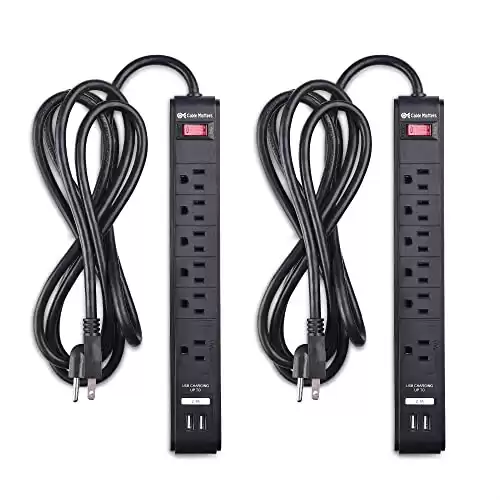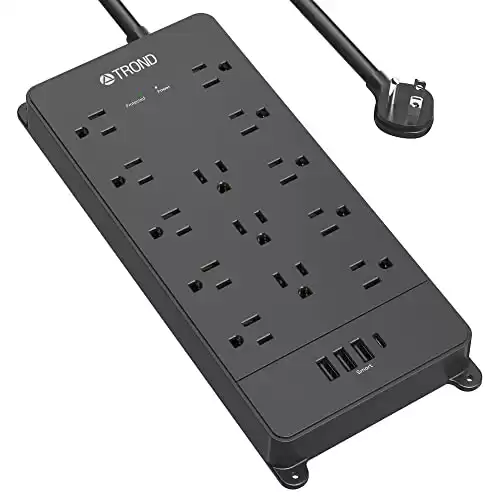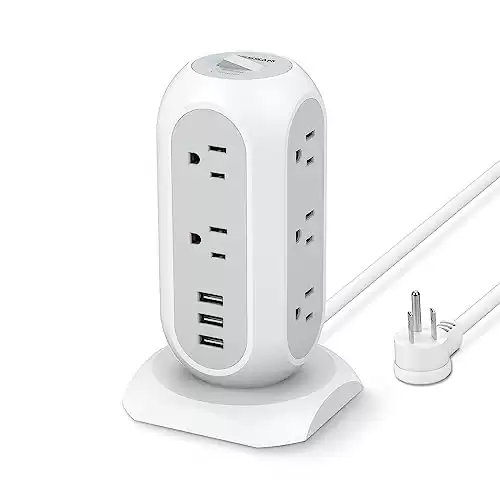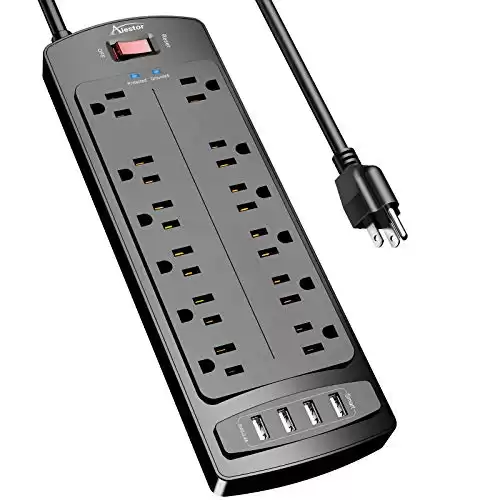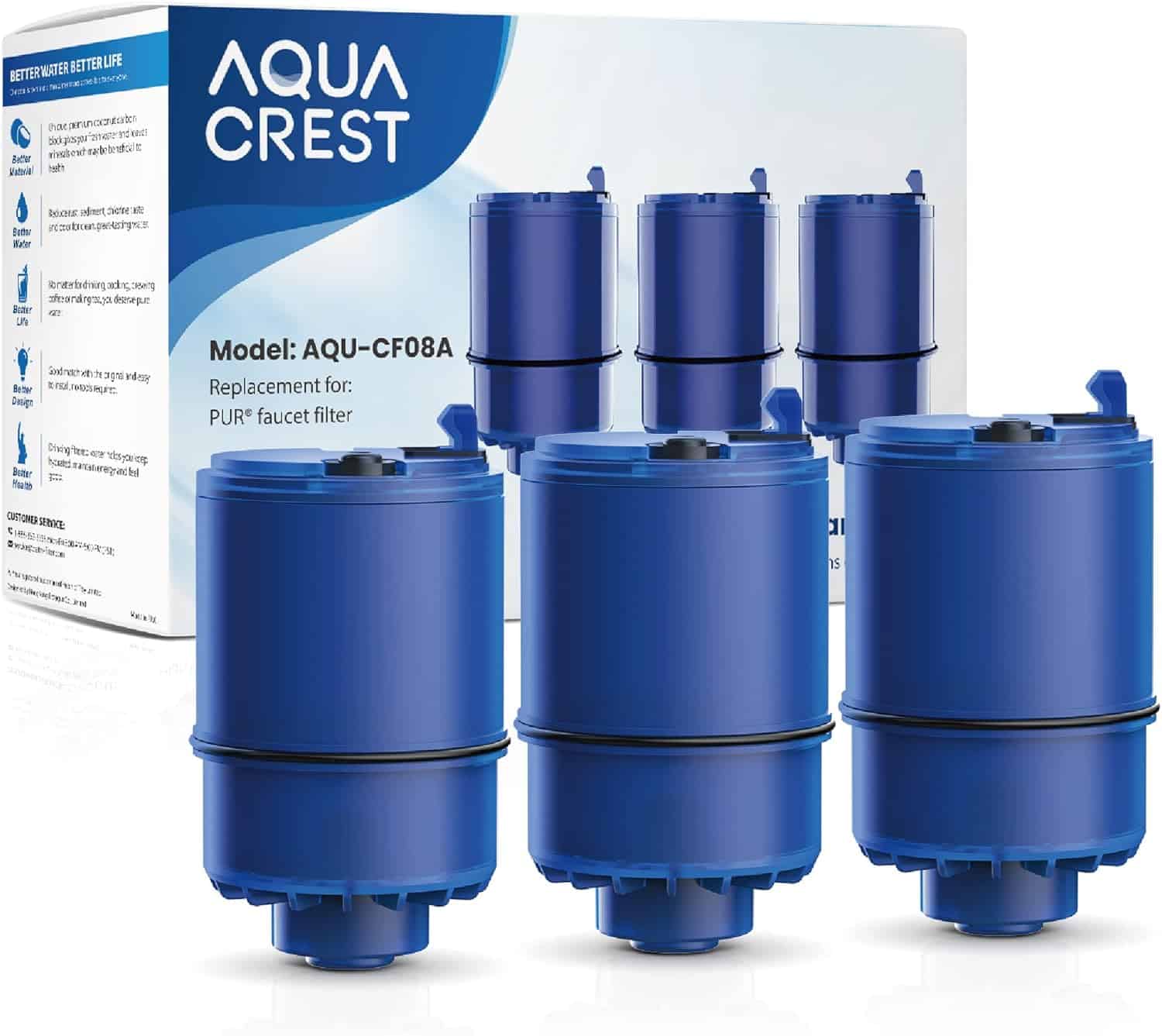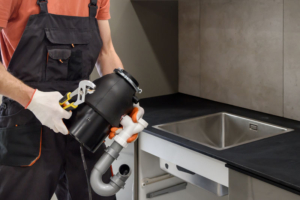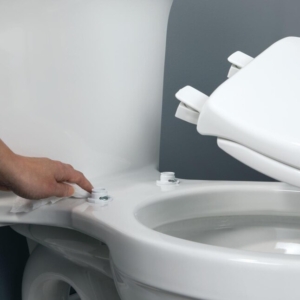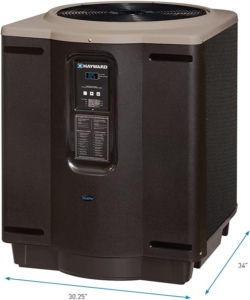The Ultimate Guide to Surge Protector Power Strips:
Everything You Need to Know

When it comes to safeguarding expensive electronics, one tool stands out: the surge protector power strip. This handy device not only provides multiple outlets for various appliances, but also protects them from damaging power surges. It’s a smart investment for anyone looking to extend the lifespan of their electronics while also adding convenience to their setup. This blog post will dive into the ins and outs of surge protector power strips, explaining what they are, how they work, and why they’re a must-have for every home and office.
Surge Protector Power Strip: Definition and Function
Function of a Surge Protector Power Strip
Surge protectors are designed to divert excess voltage away from your electronic devices, channeling it to the grounding wire instead. This helps regulate the flow of electricity and prevents any potential damage caused by power surges. By using a surge protector power strip, you can rest assured that your devices are protected from voltage fluctuations that may occur due to lightning strikes, electrical malfunctions, or power grid issues.
Importance of Surge Protection for Electronic Devices
Shielding Your Devices from Power Surges
Power surges, which are brief but intense increases in electrical voltage, can wreak havoc on your electronic devices. These sudden spikes can occur at any time, whether it’s during a thunderstorm or due to electrical fluctuations within your home or office. Without surge protection, your devices are vulnerable to potential damage.
Safeguarding Your Investments
Think about the number of electronic devices you rely on daily – computers, televisions, gaming consoles, routers, and more. Each of these devices represents a significant investment, and the cost of repairing or replacing them can add up quickly. By using a surge protector power strip, you are taking proactive measures to safeguard your investments and protect them from unexpected power surges.
Extending the Lifespan of Your Electronics
Power surges can cause irreversible damage to the internal components of your electronic devices. Over time, these surges can degrade and shorten the lifespan of your devices, leading to frequent breakdowns and the need for replacement. Using a surge protector power strip acts as a buffer, absorbing the excess voltage and protecting your electronics from premature wear and tear.
Peace of Mind
Having surge protection for your electronic devices provides peace of mind. You can go about your daily activities without worrying about the potential damage caused by power surges. Whether you’re working, gaming, or simply watching your favorite shows, knowing that your devices are protected from electrical fluctuations allows you to enjoy them without unnecessary stress or concern.
How Does a Surge Protector Power Strip Work?
A surge protector power strip is an essential device that safeguards your valuable electronic equipment from sudden power surges. In this section, we will explore the inner workings of a surge protector power strip, providing you with a clear understanding of how it functions to protect your devices.
Overview of Surge Protection Technology
Surge protection technology is designed to divert excess voltage away from your devices, ensuring they receive a steady and safe supply of electricity. Power surges can occur due to various reasons, such as lightning strikes, utility grid fluctuations, or electrical faults within your home or office. These surges can create a sudden surge in voltage, which can damage sensitive electronic components.
To counteract these power surges, surge protector power strips utilize a combination of components and technologies. The primary component responsible for this protection is called a metal oxide varistor (MOV). A MOV is a voltage-dependent resistor that acts as a valve, allowing normal voltage levels to pass through while diverting excessive voltage to the ground.
Internal Components of a Surge Protector Power Strip
Now let’s take a closer look at the internal components of a surge protector power strip:
- Metal Oxide Varistors (MOVs): As mentioned earlier, MOVs are key components in surge protector power strips. These small, cylindrical devices are made of a ceramic material with zinc oxide grains. When voltage levels exceed a certain threshold, the MOV conducts the excess electricity to the ground, protecting your devices.
- Gas Discharge Tubes (GDTs): GDTs are another common component found in surge protectors. They consist of two electrodes sealed within a glass tube filled with inert gas. When a power surge occurs, the voltage ionizes the gas, creating a conductive path to divert the excess electrical energy away from your devices.
- Transient Voltage Suppressors (TVS): TVS devices are solid-state clamping devices that provide additional protection against voltage spikes. They operate by rapidly clamping the voltage to a safe level, preventing it from reaching your devices.
- Fuse or Circuit Breaker: Surge protector power strips often include a fuse or circuit breaker as a safety measure. In the event of a catastrophic surge or a faulty surge protector, these components help prevent overheating and potential fire hazards.
By combining these components, surge protector power strips create a layered defense system against power surges. This multi-level protection ensures that any excess voltage is safely redirected, safeguarding your devices from damage.
| Product Image | Product Name / Price | Primary Button |
|---|---|---|
Benefits of Using a Surge Protector Power Strip
Surge protector power strips have become an essential accessory in today’s technology-driven world. With the increasing number of electronic devices in our homes and offices, it is crucial to protect them from unexpected power surges. In this section, we will explore the various benefits of using a surge protector power strip.
Protection Against Power Surges
One of the primary advantages of using a surge protector power strip is the protection it offers against power surges. Power surges, caused by lightning strikes, electrical faults, or even fluctuations in the power grid, can severely damage electronic devices. A surge protector power strip is designed to absorb and redirect excess voltage, safeguarding your devices from potential harm. By investing in a surge protector power strip, you can ensure the longevity and reliability of your valuable electronics.
Enhanced Safety for Devices and Users
In addition to protecting your devices, surge protector power strips also prioritize safety for both your devices and yourself. The built-in circuitry of a surge protector power strip actively monitors the incoming voltage and automatically shuts off power in the event of a surge, preventing any potential fire hazards. This added layer of safety offers peace of mind, particularly when leaving your devices unattended or during a thunderstorm. It’s like having a guardian angel for your electronics!
Convenience and Organization of Multiple Devices
As technology continues to advance, our reliance on multiple devices has become a norm. From smartphones and tablets to laptops and gaming consoles, the number of devices needing power has increased. A surge protector power strip allows you to conveniently plug in and power multiple devices simultaneously from a single power source. This eliminates the need for numerous individual power outlets and keeps your space organized and free from tangled cables. Say goodbye to the hassle of searching for available outlets or untangling cords!
Cost-Effectiveness and Energy Efficiency
Using a surge protector power strip can also lead to cost savings and energy efficiency. Many surge protector power strips feature energy-saving technologies such as automatic power-off switches, which completely cut off power to idle devices. This eliminates “vampire power” or standby power consumption, which can account for a significant portion of your energy bill. By using a surge protector power strip, you can easily control the power supply to your devices and reduce unnecessary energy consumption, ultimately saving you money.
Factors to Consider When Choosing a Surge Protector Power Strip
When it comes to protecting your valuable electronic devices from power surges, a surge protector power strip is a must-have. But with so many options available on the market, how do you choose the right one? In this section, we will discuss the key factors to consider when selecting a surge protector power strip to ensure maximum protection for your devices.
Joule Rating and Clamping Voltage
The joule rating and clamping voltage are two important specifications to consider when choosing a surge protector power strip. The joule rating indicates the amount of energy the surge protector can absorb before it fails to provide protection. A higher joule rating means a greater capacity to handle power surges. Aim for a surge protector with a joule rating of at least 600 joules or higher for optimal protection.
Clamping voltage, on the other hand, refers to the voltage at which the surge protector will start diverting excess energy away from your devices. The lower the clamping voltage, the better the protection. Look for a surge protector with a clamping voltage of 400 volts or less to ensure that your devices remain safe during power surges.
Number of Outlets and Cord Length
Consider how many outlets you will need for your devices when choosing a surge protector power strip. It’s always better to have extra outlets to accommodate future needs. Look for power strips with a sufficient number of outlets to handle all your devices.
Additionally, pay attention to the cord length of the surge protector. Ensure that the cord is long enough to reach your nearest power source without causing any inconvenience. A longer cord gives you more flexibility in positioning your surge protector power strip.
Types of Surge Protector Power Strips
Surge protector power strips come in various types, each offering different levels of protection and functionality. Understanding these types will help you make an informed decision.
- Basic Surge Protector Power Strips: These are the most common and affordable options available. They provide basic surge protection for your devices and are suitable for everyday use in homes and offices.
- Advanced Surge Protector Power Strips: These power strips offer enhanced protection features such as additional surge protection stages, noise filtering, and indicator lights. They are ideal for sensitive electronic equipment and high-end devices.
- Smart Surge Protector Power Strips: These power strips incorporate advanced technologies like USB ports, Wi-Fi connectivity, and mobile apps. They provide not only surge protection but also the ability to control and monitor your devices remotely.
Consider your specific needs and budget when selecting the type of surge protector power strip that suits you best.
Warranty and Connected Equipment Coverage
Before making a final decision, check the warranty and connected equipment coverage offered by the surge protector power strip manufacturer. A reputable brand will typically provide a warranty that covers both the surge protector itself and any connected equipment that may be damaged during a power surge.
Look for surge protectors with warranties that offer a reasonable duration, such as a minimum of one year. Additionally, check the terms and conditions of the connected equipment coverage to ensure it aligns with your expectations.
By considering the joule rating and clamping voltage, number of outlets and cord length, types of surge protector power strips, as well as the warranty and connected equipment coverage, you can make an informed decision when choosing a surge protector power strip. Protect your valuable electronic devices and give yourself peace of mind knowing that they are safe from power surges.
Proper Usage and Maintenance of a Surge Protector Power Strip
Surge protector power strips are essential devices that protect our valuable electronic equipment from sudden power surges and voltage spikes. To ensure their effectiveness and longevity, it is important to use and maintain them correctly. In this section, we will discuss some key tips for installation and placement, monitoring and replacing surge protectors, as well as cleaning and avoiding overloading.
Installation and Placement Tips
Proper installation and placement of a surge protector power strip can significantly enhance its performance and protect your devices more effectively. Here are some important tips to keep in mind:
- Location, location, location: Place your surge protector as close to the electronic devices as possible. This will minimize the length of the power cords and reduce the chances of voltage drops.
- Avoid daisy-chaining: Do not connect multiple surge protectors in series or “daisy-chain” them. Each surge protector should be directly connected to a grounded outlet to ensure maximum protection.
- Accessible and ventilated: Ensure that the surge protector is easily accessible and not hidden behind furniture or obstructed by other objects. Additionally, make sure it is well-ventilated to prevent overheating.
- Avoid moisture and extreme temperatures: Keep your surge protector away from areas with high humidity or excessive heat. Moisture and extreme temperatures can damage the internal components and reduce its effectiveness.
Monitoring and Replacing Surge Protectors
Regular monitoring and timely replacement of surge protectors are crucial to maintain their efficiency and protect your devices. Here are some important points to consider:
- Inspect for physical damage: Periodically check your surge protector for any signs of physical damage such as frayed cords, cracked casing, or loose connections. If you notice any issues, it’s time to replace it.
- Surge indicator light: Many surge protectors come with an indicator light that shows the unit is functioning properly. Regularly check if the surge indicator light is illuminated, and if not, it may be time for a new surge protector.
- Replace after a significant surge event: If your surge protector was exposed to a significant power surge or lightning strike, even if it appears undamaged, it is advisable to replace it. These events can degrade the internal components and compromise its ability to protect your devices.
Cleaning and Avoiding Overloading
Proper cleaning and avoiding overloading are essential for maintaining the performance and safety of your surge protector power strip. Follow these guidelines:
- Regular cleaning: Dust and debris can accumulate on the surface and vents of your surge protector, potentially obstructing airflow and leading to overheating. Periodically clean the unit with a soft cloth or brush to remove any dirt or dust.
- Avoid overloading: Each surge protector has a maximum load capacity indicated by its wattage or amperage rating. Exceeding this capacity can lead to overheating, tripped circuit breakers, or even fires. Make sure to distribute the load evenly among multiple surge protectors or use a higher-rated unit if necessary.
- Unplug during storms: To provide maximum protection during thunderstorms or when you’re away for an extended period, it is wise to unplug your electronic devices from the surge protector. This will prevent any potential damage from power surges caused by lightning strikes or utility line disturbances.
Common Misconceptions About Surge Protector Power Strips
Surge Protectors vs Power Strips
Power strips are multi-outlet extension cords that allow you to plug in multiple devices. They are convenient for providing additional outlets and managing cords, but they do not offer any protection against power surges.
On the other hand, surge protectors are specifically designed to safeguard your valuable electronics from power surges. They contain built-in components that divert excess voltage away from your devices, preventing damage or data loss. So, while power strips may offer convenience, surge protectors offer protection.
Lifetime Protection Guarantee
One misconception about surge protector power strips is that they last forever. While it’s true that some surge protectors have a long lifespan, it’s important to note that they do not last indefinitely.
Surge protectors are designed to absorb and redirect excessive voltage during power surges. Over time, the components within the surge protector can become worn out or degraded, reducing its effectiveness. Manufacturers usually provide a recommended lifespan for their surge protectors, typically ranging from 3 to 5 years.
To ensure optimal protection for your devices, it’s crucial to replace your surge protector power strip within the recommended timeframe or as soon as it’s been compromised by a power surge.
Surge Protectors and Lightning Strikes
Another misconception is that surge protectors can fully protect your devices during a lightning strike. While surge protectors are effective at absorbing and redirecting smaller power surges, they may not be able to handle the extreme voltage caused by a direct lightning strike.
During a lightning storm, it’s recommended to unplug your devices and disconnect them from your surge protector power strip. This extra precaution can help safeguard your electronics from potential damage caused by electrical surges that may enter your home through power lines during a lightning strike.
Remember, surge protectors are designed to protect against most power surges that occur within your electrical system, but they may have limitations when facing the immense power of a lightning strike.
By understanding the differences between surge protectors and power strips, the importance of replacing surge protectors within their recommended lifespan, and the limitations of surge protectors during lightning strikes, you can make informed decisions to protect your valuable electronics.
Stay tuned for the next sections where we will discuss the key features to consider when purchasing a surge protector power strip and how to properly use and maintain them for optimal protection.
| Product Image | Product Name / Price | Primary Button |
|---|---|---|
Conclusion
A surge protector power strip is an essential device for safeguarding your electronic devices from electrical surges and unexpected power fluctuations. By investing in a high-quality surge protector power strip, you can protect your valuable electronics, such as computers, TVs, gaming consoles, and more, from potential damage caused by power surges.
Not only does a surge protector power strip provide surge protection, but it also offers the convenience of multiple outlets, allowing you to connect and power multiple devices simultaneously. This eliminates the need for multiple power adapters, reducing clutter and improving the organization of your workspace or entertainment area.
When choosing a surge protector power strip, it is important to consider factors such as joule rating, number of outlets, cord length, and additional features like USB ports and LED indicators. Opting for a surge protector power strip with a higher joule rating will provide better protection against power surges, while more outlets and USB ports offer greater convenience.
Remember to regularly inspect and replace your surge protector power strip if it shows signs of wear and tear, as this can compromise its ability to provide effective surge protection. By taking these precautions, you can prolong the lifespan of your electronic devices and minimize the risk of damage caused by electrical surges.
Investing in a surge protector power strip is a small but crucial step in ensuring the safety and longevity of your electronic devices. By making this smart choice, you can have peace of mind knowing that your valuable electronics are protected from power surges and unexpected electrical disturbances.

